
Binance
Only for verified users
XRP, or Ripple, as it’s also called, is a cryptocurrency with utility. Utility that’s designed for cross-border institutional transactions.
This guide teaches you everything you need to know about XRP and how to buy it as well as where you can currently trade XRP.

Only for verified users



Discover the world of Ripple, RippleNet and XRP with CryptoMeister.
Whether you want to buy XRP, learn how RippleNet works or simply want to understand this controversial world, we’ve got you covered.
So, without further ado, let’s dive into the mysterious, confusing, and powerful world of XRP!

XRP is a slightly confusing “cryptocurrency” in the sense that many people think it’s called Ripple.
However, Ripple is the company that developed XRP and RippleNet that XRP is used on.
The foundations for XRP were laid in 2004 by Ryan Fugger, meaning that its legacy predates Bitcoin.
But XRP didn’t really move until Jed McCaleb and Chris Larson took over in 2012.
McCaleb and Larson took the ideologies and theories put forward by Fugger and developed OpenCoin.
Interestingly, Fugger’s ideas and OpenCoin were based on an invention from David Chaum in the 1980s.
Chaum produced the system back then, but the OpenCoin team refined it and made it suitable for everyday use in the 21st century.
OpenCoin eventually rebranded to Ripple Labs in 2015, causing much controversy.
Since that fateful day, Ripple, RippleNet and XRP have been mired in controversy.
Pro-XRP supporters vehemently deny the claims that XRP is a security, but the anti-XRP community are very firm in their belief.
The reality?
It doesn’t seem to make a difference whether XRP is a security or not as it still works.

XRP is fairly complicated in that Ripple Labs claims that it didn’t create it.
However, OpenCoin did create something known as Ripple Credits.
These credits then changed their name to XRP around the same time that OpenCoin became Ripple Labs.
The entire name shift debacle is murky and has spawned a pile of accusations against Ripple Labs.
But let’s save that for later when we look at whether XRP is legal or not, shall we?
If you can’t wait for that juicy debate, you can skip to it here.
For now, we’re going to focus on how XRP and RippleNet work.
RippleNet doesn’t use blockchain technology, instead opting for a “distributed” ledger database system.
This is proprietary technology known as Ripple Protocol Consensus Algorithm (RPCA).
RippleNet is then owned by Ripple and RippleNet uses XRP as the native currency – see how this is already getting confusing and murky?
RippleNet works as a real-time gross settlement system, allowing transactions to clear instantly.
The ledger refreshes every 3-5 seconds or whenever the validator nodes come to consensus.
Currently, there are only a handful of accepted validator nodes maintaining the ledger database.
As it stands, there are 39 official validators, including a handful of universities, financial institutions, and, of course, Ripple Labs.
Thanks to its unique RPCA, transactions are blazing fast and cost around €0.000004506 – that’s dirt cheap.
The average transaction fee is 10 drops, with a drop being the smallest unit of XRP – just like a satoshi is in Bitcoin.
The RPCA also uses very little power, when compared to the likes of Bitcoin.
This makes XRP a more eco-friendly choice for cryptocurrencies than the likes of Bitcoin and Ethereum.

Before you buy XRP, you might want to know a few things about its use cases – there are not many for the average Joe.
What we mean by that is XRP isn’t aimed at the guy on the street.
XRP was developed to be used by financial institutions to facilitate cross-border payments.
The average cost of a traditional cross-border payment will cost anywhere between €20 and €50; a cost that’s always passed on to the consumer – you.
So, banks around the globe have all signed up to RippleNet and will process your payments using it.
Let’s say Dave, in Kiev, wants to send €200 to Mary, in Abu Dhabi.
Normally, this transaction would cost Dave ~€35 and would take up to 5 working days.
But, when both banks are using RippleNet it will cost Dave nothing at all and Mary will have the money in seconds.
All banks and financial institutions that sign up to RippleLabs buy a massive tranche of XRP from Ripple when they join the network.
Dave’s bank will convert the Euros into XRP from their stores and send it to Mary’s bank.
Mary’s bank will then convert it into Dirhams and move it into her account.
The fee for the transaction will be ~€0.000004506 and will take a maximum of 10 seconds – when you factor in the additional time each bank takes to convert from their pools of currencies.
This is what XRP is designed for, and this is how it works best.
Now, the average Joe can also use this powerful tech, but you get far less out of it than a bank or financial institution would.
You can spend XRP at a handful of merchants to buy goods and services, but they’re few and far between.
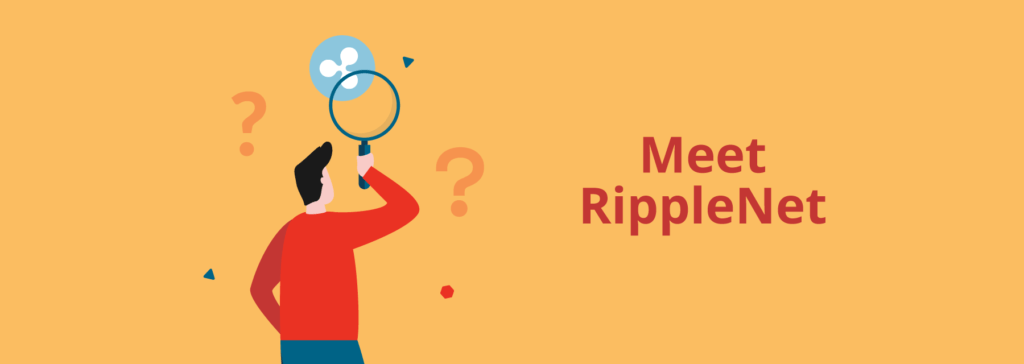
RippleNet is a piece of global payment infrastructure designed to speed up payments, make them faster and safer.
It creates a global standard of payments that banks and financial institutions can access via an API.
There’s a legal rulebook on how transactions through RippleNet work, meaning that they’re all standardized and identical the world over.
RippleNet uses advanced pathfinding technology, allowing payments to be routed from originator to beneficiary as fast as possible.
Another feature of RippleNet is that it utilizes bi-directional messaging through an advanced API.
What this does is it shares key information with both parties in real time.
Information such as fees, currency, FX rate and know your customer (KYC) requirements are shared, meaning the transactions are frictionless and seamless.
Banks and financial institutions can also get access to a feature known as on-demand liquidity.
This reduces the cost of using RippleNet and therefore reducing the fees that you as a consumer need to pay.
The technology is solid and provides real benefits to banks, financial institutions, and banking customers.
Think of RippleNet as the business-to-business end (B2B) of Ripple.
You need technical knowledge to be able to connect to it properly, meaning that your average Joe can’t do it.
Your transaction when you send XRP from an exchange to your wallet will not use RippleNet as this is a B2B solution, not B2C.

If you’re thinking about making the move to buy XRP, then you’re going to need an XRP wallet.
Exchanges are a bad place to store cryptocurrencies long-term, so set up an XRP wallet well ahead of time.
You can do this whilst you’re waiting for the verification process on your chosen exchange to finish.
Before you pick an XRP wallet, you need to decide whether you want quick and easy access to your XRP or if you don’t mind jumping through a few hoops.
When you buy XRP, it’s worth noting that XRP generates a lot of hate and criticism, so remember that the price will be more volatile than other top 10 cryptocurrencies.
Exchanges have delisted XRP trading pairs in the past as well, especially when Ripple gets in legal tangles.
So, quick and easy access might be the best way to go here.
The best XRP hot wallets are:
You can learn more about crypto wallets here.
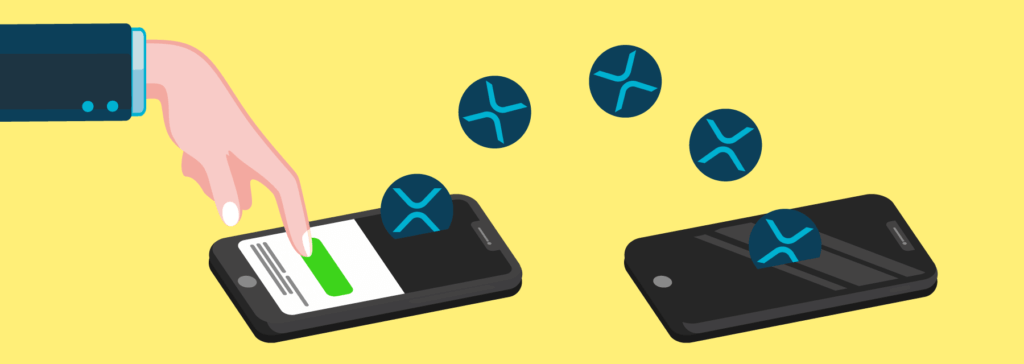
Depending on who you are and which platform you’re using, your XRP transaction could look rather different.
Let’s begin with the XRP transaction that 99% of the world will make – Average Joe to Average Jane.
When you make an XRP transaction, you’ll need to load up your wallet.
Then, scan the QR code of the address you wish to send XRP to, or input the address manually.
If your destination uses a tag, input that and the amount of XRP you wish to send.
Some wallets will also ask for a specific memo, so if that’s required, pop one in there.
If not, just leave a nice note – a reminder of why you’re sending the XRP is always a good idea, especially for tax time.
Then when you’re happy, hit send.
Your transaction will then enter the transaction queue, waiting for the next ledger refresh.
Validator nodes will then come to consensus within 5 seconds and your XRP will land in its destination.
If you’re making a transaction on RippleNet, things look a little bit different.
Let’s say you are using bank A, and you’re sending money to bank B.
You will input the account details of the account you wish to send it to, much like you would a normal bank transfer.
Once you hit send, the bank will automatically do the rest for you.
It will add know your customer (KYC) information, FX rates in the case of a currency exchange, any fees deducted and the settlement time you chose.
This will be stuffed into the transaction details and RippleNet will then shoot it over to bank B.
Once the transaction hits the ledger, validators will confirm the transaction and it will reach bank B in a maximum of 5 seconds.
Bank B will then unpackage the transaction using the information that bank A added to the transaction.
The money will then get credited to the account in bank B.
If you selected instant payment, the process would take around 10 seconds or so, factoring in the time taken by both banks to work their magic and relay information,
XRP was designed to be used by banks and financial institutions, rather than the general public.
So, when you create an XRP wallet, you’ll be given an address.
This is where you will receive your currency and is your account in the Ripple ledger.
Think of it like your bank account information.
If you want to receive transactions, you then share your XRP address with the sender.
The ledger will then divert the funds to that address upon the next ledger refresh.
XRP addresses are between 25 and 35 characters in length, and comprise of both letters and numbers,

There are risks with every cryptocurrency out there, but XRP has some extra risks thrown in.
Many people believe that XRP is a security rather than a utility token, and there’s a lot going for that argument.
As a result, XRP finds itself on the pointy end of a lot of abuse, and even the occasional lawsuit.
The US Securities and Exchange Commission (SEC) recently took aim at XRP, resulting in its price dumping and many exchanges delisting it.
The court case has been rumbling on for just over a year now, and there’s no end in sight.
Most recently, the SEC gave Ripple the green light to depose former SEC Director of Corporation Finance, William Hinman.
As a result, there’s a lot of price movement based on what happens in the case, meaning that it can take violent swings seemingly out of nowhere.
There’s also the issue that Ripple unlocks 2 billion XRP every month from escrow to sell to RippleNetwork partners and to give to Jed McCaleb.
McCaleb was allocated 9.5 billion XRP when he left the company, which he gets in monthly installments.
He sells at a rate of around 19 million per day, which is a scary thought for the supply and demand of XRP.
Throw this on top with the fear that you could get hacked, and XRP soon becomes a nightmare.
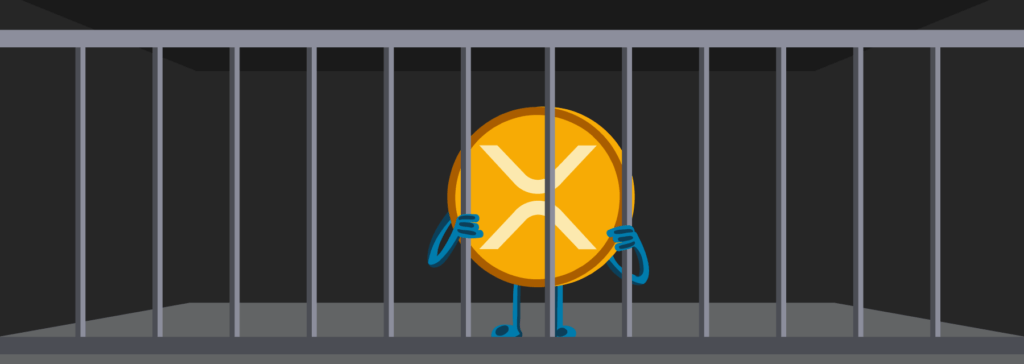
The part we’ve all been waiting for – is XRP legal?
The US Securities and Exchange Commission (SEC) is currently waging this war with Ripple in court, and it’s not looking pretty.
In a nutshell, XRP is not illegal in any way, but it may have been illegally sold.
The whole SEC ruckus stems from the fact that XRP looks like and behaves like a security but was not sold as a security.
Instead, it was sold as a utility token.
Common sense is that if it walks and talks like a security, it’s a security.
But this is why the SEC is taking Ripple to court over this slight disagreement so that it can be cleared up once and for all.
A court ruling is considered binding, so it’s better to get it done this way rather than let the speculation drag on and on.
To make this debate a little bit simpler, we’re going to break it down into 3 sections.
We’ll start by looking at the facts against Ripple, then the arguments for and our own verdict.
This is just for fun and we’re by no means qualified to call XRP a security or utility token, we’ll leave that to the SEC.
Let’s begin!

Why does everyone call XRP Ripple?
That’s because it was the name of the token when OpenCoin became Ripple Labs.
Just before the lawsuit with the SEC kicked off, Ripple Labs pushed a massive campaign to get everyone to call XRP by the name XRP, rather than Ripple.
Then, there’s the case where Ripple Labs altered the text on its website to change the message completely.
It began life by saying that XRP is their creation and main revenue source.
The company made no distinction between Ripple and XRP, hinting that they’re the same thing.
This was, of course, altered.
But you can view the original version of the website through archive.org.
A copy of the website from March 2014 suggests that XRP was created by Ripple Labs, making it a security seeing as it holds more than 50% of the total supply.
The website has since changed to include this nice statement:
Ripple, the company, didn’t create XRP; 100 billion XRP was created before the company was formed, and after Ripple was founded, the creators of XRP gifted a substantial amount of XRP to the company.
Next up is a trademark that OneCoin used to own – XRP.
OneCoin registered a trademark for XRP back in 2013, 2 whole years before Ripple Labs came into existence.
The trademark was eventually transferred to Ripple Labs several years down the line.
When Ripple repeatedly claims that XRP is completely decentralized and totally separate from Ripple, it’s a little worrying to see that it owns a patent for XRP.
Ripple Labs also sold Roger Ver $250,000 of XRP personally in 2013, which also contradicts its claims that Ripple does not own and did not create XRP.
In fact, Ripple Labs got a fine for not disclosing this transaction.
As a result, this suggests that Ripple does own the XRP as it controls the supply and could only sell it based on this.
If these arguments stand to reason, then XRP looks just like a security.
This in turn could hit the price of XRP in the short-term.
In the long run, it doesn’t make much difference as RippleNet is incredible at what it does.

On the other side of the coin, we’ve got the facts for Ripple and XRP.
XRP as a token has a utility – providing liquidity on the RippleNet
Banks and financial institutions will either directly or indirectly take advantage of XRP liquidity pools to power their cross-border transactions.
Whether they’re sending XRP to another bank or simply using XRP to pay the transaction fees to use the network, XRP is still being used.
This shows that XRP has utility beyond that of a security, which could be vital in its case with the SEC.
As we mentioned earlier, we’re not capable of delivering a verdict on Ripple and XRP, that’s for the SEC to do.
What we can do is give you the facts and our opinion.
The case with the SEC still has a long way to go and we could see just about anything unfold.
There are still depositions to process, so we could be looking at another year of courtroom drama, at least.
But, based on the facts readily available, we’d side with the fact that XRP is a security and Ripple Labs mis-sold XRP to early “investors”.
This would result in a hefty fine for Ripple Labs and we’d likely see a lot of XRP hodlers dump their tokens in the short term.
However, XRP facilitates the RippleNet and provides some utility.
As a result, banks and financial institutions that have put in the work to integrate with RippleNet will carry on using it.
Then XRP will get back to its intended use of powering RippleNet rather than being an investment for the average Joe.
Before you buy XRP, you need to make sure that it’s safe to do so.
Fortunately for you, there are several top exchanges that will still let you buy XRP, and they’re safe.
We recommend that you buy XRP from a trusted and reliable cryptocurrency exchange, rather than an unknown entity.
We’d also advise that you don’t buy XRP in person from a stranger on the street as this can be dangerous in other ways.
The best cryptocurrency exchanges are letting the SEC case pan out before they take a decision on delisting XRP, which is the right stance if you ask us.
You can currently deposit any supported currency and buy XRP at the following exchanges:
If you do opt to buy XRP in person, always meet in a safe place.
Never go alone and arrange to meet during the day in a public area.
This will give you the best chances at making sure the transaction is safe and secure.
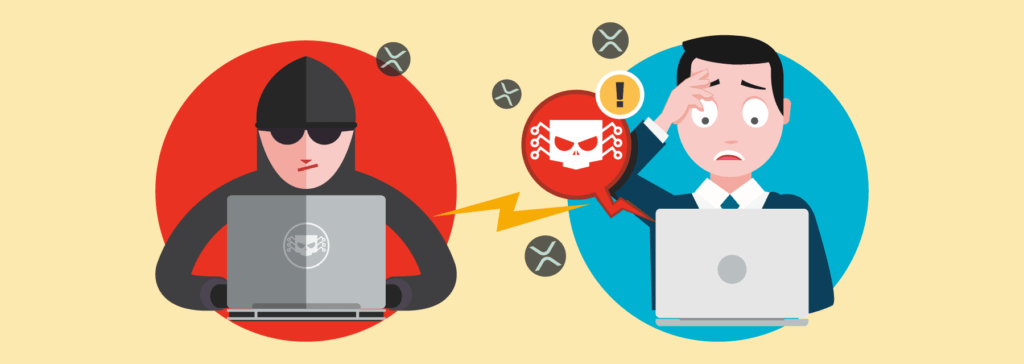
If you’re keeping your XRP on some form of technology, then you can get hacked and lose it all.
The only way to ensure that your XRP is safe and sound is to use a paper wallet.
These are the safest way to hodl XRP, or any crypto for that matter.
But, for the most part people store their XRP in a wallet.
So, when you buy XRP, make sure you store it somewhere safe.
If you don’t want a paper wallet, you can follow these steps to keep your XRP safe and secure.
First up, make sure that you’re using a unique password on every website, app and wallet that you have.
You can use a password manager such as LastPass or 1Password to handle this for you.
This is done so that if one website or app you use gets compromised, only that password is compromised rather than your entire life.
Next up, enable 2-factor authentication (2FA) on all of your accounts.
Using an authenticator app like Authy or Google Authenticator is far more secure than SMS or email 2FA.
Finally, store any wallet seed phrase you generate somewhere secure.
Ideally it should be air gapped, but you can store it in a secure password management tool.
However, air gapped is preferred as there’s no point of failure there.
If you follow these steps, your XRP will be as safe as possible.
There are more things that you can do, but these are the basics that keep you from being a random target or victim.

If you want to buy XRP, then you’re fairly limited in your choice.
The case with the US Securities and Exchange Commission (SEC) that we spoke about has rattled exchanges.
Many rushed to delist XRP, meaning that very few crypto trading venues still list XRP.
But, fear not, you can still buy XRP with a handful of exchanges.
If you don’t like exchanges, you can always find a person to trade your other cryptocurrencies or fiat currency with a peer-2-peer trade.
However, these are not recommended and are intended for use as a last resort.
Let’s see where you can buy XRP!
The most obvious place to buy XRP is at a crypto exchange.
But, like we mentioned, you can’t buy XRP at every crypto exchange because of an ongoing suit with the SEC.
You can currently buy XRP from the following exchanges:
When you find an exchange that supports XRP trading, all you need to do is register and make a deposit.
Once you’re verified and your deposit has cleared, you can then navigate to the XRP pair with your currency of choice.
Now, due to the suit, exchanges that list XRP have limited pairs available for trading.
So, you may need to trade into a different currency before you can buy XRP.
Once you’ve done this, find the XRP pair you wish to trade, input the amount, and hit buy.
Congratulations, you just bought XRP!
Once you’ve done this, consider moving your XRP to your own wallet.
After all, not your keys, not your crypto!
If you like to live life on the edge, or in the shadows, you can opt to buy XRP in person.
You can arrange to meet someone from an XRP forum.
There are many to pick from, but XRP Reddit is a good place to start.
Just be careful with this though as there are lots of dangerous people out there.
Make sure you take friends with you to the meet and do it during the day.
Pick an open location in a public place that’s full of people.
This will make the meeting safer for you.
If you’re paying in cash, keep the cash with a friend around the corner until you verify that the trade is legitimate.
However, when you come to sell that XRP at an exchange, you may get asked a few extra questions, so be prepared for those.
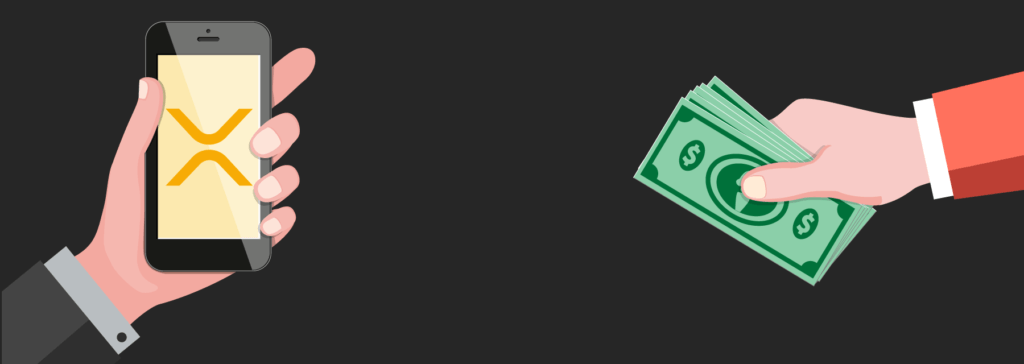
Now that you know you want to buy XRP, it’s time to pick your payment method.
This will entirely depend on the exchange you’re going to use, as not all exchanges support all payment methods.
Some will also have additional payment methods, which you can see in our detailed reviews of each exchange.
Some will also have payment methods exclusively for certain regions, so don’t be afraid to take full advantage of those if there’s one in your region.
The most common payment method when you buy XRP will be a credit or debit card.
More often than not, these types of deposits will come with a small fee attached.
You can expect to pay anywhere between 1% and 5%, which is reasonable.
As a reward, your deposit will be instant, which is a huge perk if you want to buy XRP as fast as possible.
If you live in a region with a banking ban, you may not be able to use this payment method.
The same goes for if your bank isn’t crypto friendly.
If this is the case, you’ll have to look at other payment methods or workarounds.
If you’re looking to buy a big chunk of XRP, then you will want to opt for a bank transfer.
Bank transfers come with no fees attached, but will take up to 3 working days to clear in your crypto trading account.
This isn’t great if you want to buy XRP as fast as you can, but the 0% fees are a bonus.
Due to the low fees and added security, a bank transfer is ideal for large amounts of money.
However, those of you that are in a country that has a banking ban on crypto or are banking with a bank that doesn’t like crypto, you’ll have your work cut out.
You’ll need to find a work around when you buy XRP.
It’s worth noting that most exchanges will want the bank account to be in your name, so using a friend’s bank account could be a bad idea.
Finally, if you’re meeting someone for a P2P exchange, then you’re going to want cash.
Cash is king for a number of reasons, but first and foremost it helps you to remain anonymous.
You can easily buy XRP with cash, as long as you meet a reputable seller.
Obviously make sure that you follow the rules of safe P2P transactions.
Meet in a public place during the day and take friends with you.
This will reduce the chance of anything untoward happening.
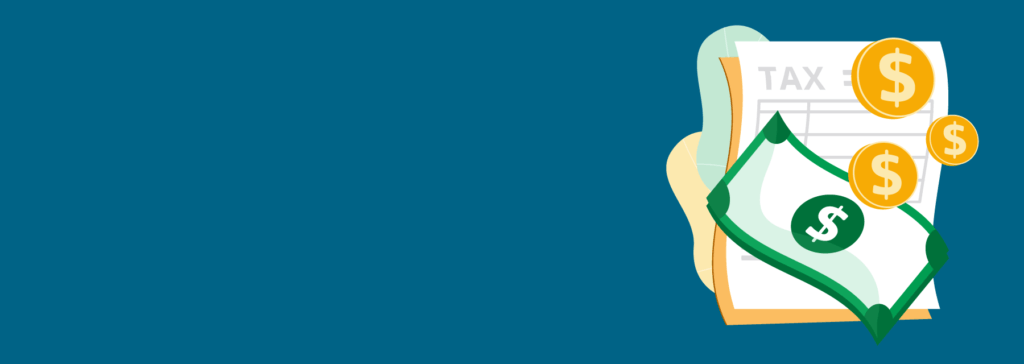
When you make profits on your XRP, you will be wondering if you need to tell the tax man.
For the most part, you will have to pay taxes.
Generally speaking, if your country has capital gains tax rules, then you’ll need to pay based on that tax band.
The plus side of this is that if you make a loss on your XRP trades, you can claim capital loss and get it deducted from your tax bill.
Some countries have crypto specific tax rules that can benefit you as a crypto trader.
For example, Australia, Germany and Malta will reduce your tax bill to 0% if you hold for more than a year.
Finally, if you live in a country where tax doesn’t exist then you’re probably safe to assume that you don’t need to pay taxes.
You can learn more about crypto taxes here!
If you’re willing to take a bit of a risk, XRP could potentially be a top choice for your crypto portfolio.
If the case with the US Securities and Exchange Commission (SEC) is settled behind closed doors or swings in Ripple Labs’ favor, then XRP should perform nicely.
It’s already being used by a large number of top banks around the world and there’s no sign of this interest slowing down.
On the other hand, if the case with the SEC goes badly, we could see a huge drop in the price.
Throw this in with the 2 billion XRP released every month and XRP could sink rapidly.
If you are keen for a bit of a gamble, then XRP will make a great addition to your portfolio.
It has potential, but there are a lot of factors that could hold it back

XRP has all the hallmarks of a good crypto to day trade thanks to its short, sharp, and sudden price swings.
If you’ve got the time, resources and experience, you can profitably trade XRP.
If you’re following the SEC case closely, you could trade it based on the news and comments coming out of that, which has caused huge swings and dips already.
Be warned though.
A novice day trader can lose a lot of money in a short space of time, so test out your strategy before you begin.
And remember, don’t chase your losses in a session.
Set a loss limit and walk away when you hit it.
For the long-term, XRP looks like a solid investment.
If you can hold off from acting on the short-term outcome of the SEC case, then XRP has a decent future ahead of it.
There’s plenty of potential with new partnerships and banking institutions, which is fantastic for long-term XRP holders.
The one downside of the long-term hodl is that XRP isn’t designed as an investment.
RippleNet works best when XRP has a low value.
This is part of the plan behind Ripple Labs slowly rolling out the 100 billion XRP.
Keep the market diluted so that the price doesn’t rise and make it prohibitively expensive to use.
XRP is not unique in the way that it works.
In fact, it has a close competitor that was developed by the same guy – Jed McCaleb.
McCaleb left Ripple Labs to develop a new cryptocurrency using the same technology.
Known as Stellar, this competing cryptocurrency doesn’t have any of the legal furor and trouble.
If the SEC case goes south for XRP, Stellar could pick up the pieces and persuade banks to move to its platform.
Stellar has taken the lessons learned from Ripple Labs and implemented all the best features, leaving out the bad.
This could be catastrophic for Ripple should the SEC rule against it.
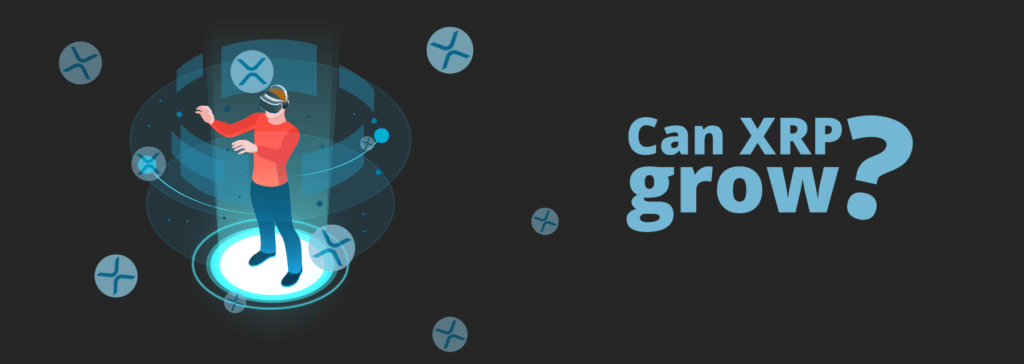
This all depends on how it goes with the SEC.
If the SEC rules in favor of Ripple Labs, then we could see XRP rally to a new all-time high in the weeks following.
If it goes the other way, we could see XRP crash back down to a couple of cents.
There’s a lot riding on the SEC case, so that’s the best place to look for indications on the future price of XRP.
It’s still too early to call it, but the evidence is pointing towards a negative outcome for XRP.
While this would be devastating for the price of XRP, it would be good for those using XRP and the RippleNet.
RippleNet thrives when the price of XRP is low, and it would make cross-border payments cheaper to use.
So, while an XRP price crash would be terrible for your portfolio, it will make sending money abroad cheaper.
All of the XRP in the world was pre-mined when Ripple Labs was formed.
Ripple Labs then unlocks 2 billion XRP every month from escrow and sells it off to whoever wishes to buy some.
This includes the likes of exchanges and RippleNet institutions.
RippleLabs also sends a bunch to Jed McCaleb who sells around 19 million XRP every day.
Whatever Ripple Labs doesn’t sell, it puts it back in escrow until the next month.
This causes the market to be rather diluted.
There’s significantly more XRP in supply than there is demand.
The SEC case has caused XRP to get delisted from virtually all exchanges and cause investors to be more wary of it.
Demand is virtually non-existent when compared to the supply levels.

Every cryptocurrency has its own set of challenges, but XRP is a little different.
For the most part, it doesn’t suffer from the same trivial challenges as other cryptos.
It’s already functioning, fully developed and with a huge user base of institutional clients.
It’s troubles and challenges stem from a regulatory point of view.
So, let’s dive into those!
When XRP came to life, it may have broken some rules in the US.
The US Securities and Exchange Commission (SEC) believes that XRP is a security rather than a utility.
The pair are currently battling in the courtroom.
If the SEC wins, XRP will be ruled a security for all eternity.
This would be bad news for Ripple and would lead to some major fines.
Every person that’s ever bought XRP would be able to sell it back to Ripple Labs at the same price they paid, which if everyone decides to do, Ripple Labs likely could not afford.
Regulatory bodies are becoming more cautious of cryptocurrencies and their parent companies.
Ripple has already ruffled a few feathers, so if the SEC ruling is inconclusive, we could see other bodies and agencies getting involved.
If the case goes badly for Ripple, agencies from all round the world will dive into Ripple and seek compensation.
There’s a lot riding on this case with the SEC, and until it’s done and dusted, it’s going to be touch and go.
Ripple’s founder, Jed McCaleb, has used the same technology to create his own competing cryptocurrency – Stellar.
It’s got less real-world use cases than Ripple does at the moment, but if the SEC case goes badly then it could scoop up all of those banks.
Stellar is arguably more powerful and streamlined, making it a potent competitor for Ripple to shake off.

XRP has a lot of potential to perform well in terms of price, but don’t get too excited.
Ripple controls the supply of XRP and its product, RippleNet, performs best when the price of XRP is low.
The higher that XRP goes, the more RippleNet costs to use and this defeats its purpose.
So, as a result you can expect Ripple Labs to keep on releasing more XRP to dilute the market and keep the price low.
The legal issues surrounding XRP are also scary as an investor.
Exchanges are delisting XRP left, right and center, so bear this in mind before you buy XRP.
If more exchanges delist XRP, you could be left with no choice but to long-term hodl.
If the case with the US Securities and Exchange Commission (SEC) goes badly, it could be a long time before you break even on your XRP.
Be very careful if you do decide to buy XRP – it’s a risky move!
XRP rises in price when there’s general crypto market movement or good news for Ripple Labs.
Ripple Labs releases more XRP every month, so even the best news can prevent the price moving upwards too fast.
But, if it’s to do with Ripple Lab’s court case, then the price will move quickly.
XRP wasn’t built to be used as a currency for payment for the average Joe.
Instead, it was designed to be used to facilitate cross-border payments for banks and financial institutions.
There are a few companies that will accept XRP as payment for goods and services, but they’re few and far between.
XRP works best when it’s cheap.
As a result Ripple Labs releases more XRP into the market every month to keep the price stable and the supply diluted.
XRP might reach its all-time high and it could break it if its case with the SEC goes well, but it won’t hold.
Ripple Labs will release more XRP into the wild and tank the price.
A price of around $1 is about the maximum operating cost for RippleNet to be effective, so expect around here as a long-term goal.
XRP is a currency created by Ripple Labs, but it’s based on the work of several people
Jed McCaleb and Chris Larson created OneCoin which then turned into Ripple.
This was the foundation of the Ripple Labs that we all know today.
David Schwartz has served as the Ripple Labs CTO for many years now, bringing Ripple into fruition and the dominant platform it is today.
Ripple and its RippleNet are based on work done in the 1980s by David Chaum.
There’s a high likelihood that XRP will crash if it loses its case with the SEC.
If the case rules that XRP is a security issued by Ripple Labs, then it will crash back down to a couple of cents per token.
However, if XRP wins the case then the crash should not happen.